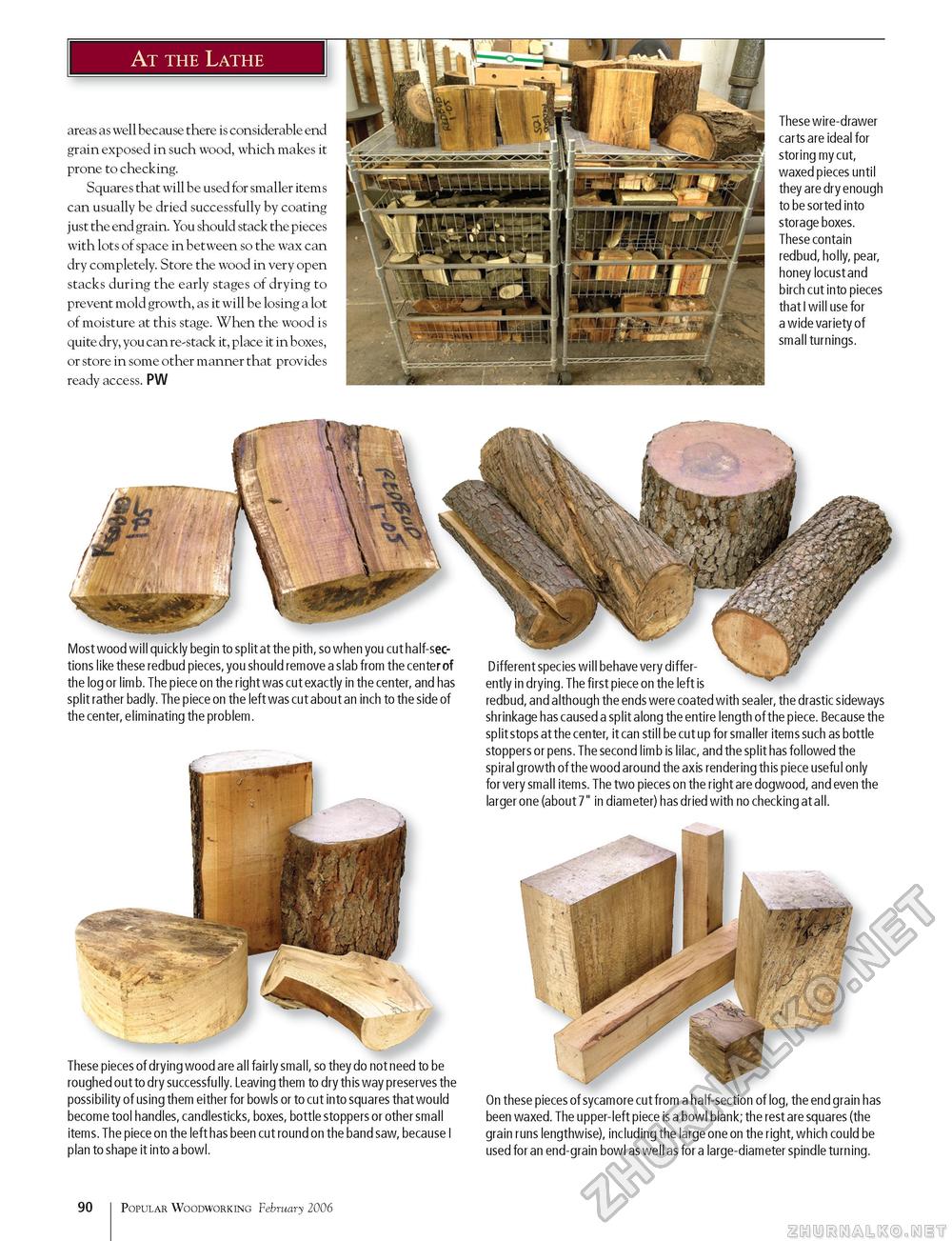Popular Woodworking 2006-02 № 153, страница 89
At the Lathe areas as well because there is considerable end grain exposed in such wood, which makes it prone to checking. Squares that will be used for smaller items can usually be dried successfully by coating just the end grain. You should stack the pieces with lots of space in between so the wax can dry completely. Store the wood in very open stacks during the early stages of drying to prevent mold growth, as it will be losing a lot of moisture at this stage. When the wood is quite dry, you can re-stack it, place it in boxes, or store in some other manner that provides ready access. PW These wire-drawer carts are ideal for storing my cut, waxed pieces until they are dry enough to be sorted into storage boxes. These contain redbud, holly, pear, honey locust and birch cut into pieces that I will use for a wide variety of small turnings. Most wood will quickly begin to split at the pith, so when you cut half-sections like these redbud pieces, you should remove a slab from the center of the log or limb. The piece on the right was cut exactly in the center, and has split rather badly. The piece on the left was cut about an inch to the side of the center, eliminating the problem. Different species will behave very differently in drying. The first piece on the left is redbud, and although the ends were coated with sealer, the drastic sideways shrinkage has caused a split along the entire length of the piece. Because the split stops at the center, it can still be cut up for smaller items such as bottle stoppers or pens. The second limb is lilac, and the split has followed the spiral growth of the wood around the axis rendering this piece useful only for very small items. The two pieces on the right are dogwood, and even the larger one (about 7" in diameter) has dried with no checking at all. ■A wm These pieces of drying wood are all fairly small, so they do not need to be roughed out to dry successfully. Leaving them to dry th is way preserves the possibility of using them either for bowls or to cut into squares that would become tool handles, candlesticks, boxes, bottle stoppers or other small items. The piece on the left has been cut round on the band saw, because I plan to shape it into a bowl. On these pieces of sycamore cut from a half-section of log, the end grain has been waxed. The upper-left piece is a bowl blank; the rest are squares (the grain runs lengthwise), including the large one on the right, which could be used for an end-grain bowl as well as for a large-diameter spindle turning. 90 Popular Woodworking February 2006 |








